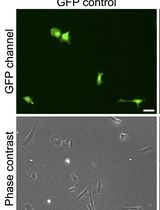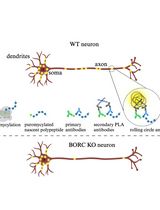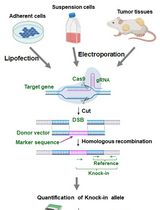- EN - English
- CN - 中文
Measuring Total Classical Pathway and Activities of Individual Components of the Mouse Complement Pathway
测量小鼠补体通路的各个组成部分的总经典通路和活动
发布: 2021年10月05日第11卷第19期 DOI: 10.21769/BioProtoc.4175 浏览次数: 3106
评审: Luis Alberto Sánchez VargasKuo-Ching "KC" MeiAleksei A Tikhonov
Abstract
The complement system is a central component of innate immunity, responsible for recognition and killing of bacteria by tagging invaders through opsonisation, thereby promoting phagocytosis, and by direct lysis. Complement activity is routinely measured using functional assays that utilise erythrocytes as targets. The classical pathway haemolytic assay (CH50) with antibody sensitised sheep erythrocytes as target is used worldwide in clinical and research laboratories to measure complement activity in human and rodent sera. While there are no particular limitations in the human assay, measuring complement in mouse serum is more difficult and usually requires large amounts of serum, which is challenging to collect in experiments. In particular, it is challenging to measure the activities of individual mouse complement proteins. To overcome this hurdle, we have developed protocols that employ human sera depleted of single complement proteins as the source of the other complement proteins and test mouse serum to restore the relevant component. This simple haemolytic assay is a useful tool for confirming natural or engineered complement deficiencies and complement dysregulation in mouse models.
Keywords: Complement (补充)Background
Complement comprises more than 30 plasma and membrane-bound proteins that interact to induce a series of inflammatory responses to defend against infection, prime innate immunity and modulate adaptive responses. The complement cascade is activated by three pathways: classical (CP), lectin and alternative (Morgan et al., 2015; Zelek et al., 2019a). The CP was the first to be discovered when investigating the bacterolytic properties of serum in the 19th century. More recent studies have shown that the complement cascade is functionally and structurally conserved in mammals, with the majority of components working across species (Slodkowicz et al., 2020; Moleón et al., 2006). CP is triggered by antigen-bound antibodies on surfaces; C1 binds and initiates a cascade with sequential generation of the CP C3 convertase C4b2a and C5 convertase C4b2a3b. The C5 convertase cleaves C5, releasing the C5a anaphylatoxin and initiating the terminal pathway through C5b; this binds C6 and C7, and the trimolecular C5b-7 complex attaches to the target surface. C8 and multiple copies of C9 are recruited to build a transmembrane pore (Podack et al., 1984; Serna et al., 2016; Menny et al., 2018). The complement system evolved to protect from pathogens; however, over-activation of complement drives inflammation in many diseases, including renal, autoimmune and neurological diseases (Zelek et al., 2019a; Carpanini et al., 2019). Emerging evidence of roles of complement activation in diverse diseases has triggered an explosion of interest in developing new complement targeting drugs and generated a need for testing in animal models. It is therefore important to have simple and robust assays measuring complement activity in rodents and other model species. Although the traditional CH50 assay, developed more than 70 years ago (Rice et al., 1952; Mayer et al., 1967), is well respected and used in research and clinical settings to measure human complement activity, its application for measuring mouse complement is limited because the “classical” targets, antibody-sensitised sheep erythrocytes (ShEA), are poor activators of mouse complement necessitating the use of high amounts of mouse serum required (typically, 25-50% concentration in assay). The utility of the assay for mouse can be improved by inclusion of an additional sensitisation step, incubating the ShEA with mouse anti-rabbit IgG, but serum requirement remains high (Zelek et al., 2019b) (Figure 1).
Here I provide modified haemolysis assay protocols for measuring the activity of individual components of mouse complement that require ~10-fold less mouse serum by combination with human depleted sera (Figure 1). Because of the high functional conservation in complement proteins between man and rodent, the test mouse component functionally restores haemolysis in the depleted human serum, providing a titratable assay.

Figure 1. Schematic of mouse classical pathway (CP) CH50 haemolytic assays. Top panel: diagram of modified CP CH50 haemolytic assay utilising double sensitised ShEA and high amounts of mouse serum (typically 25% male, 50% female). Bottom panel: diagram of the mouse component-specific CP CH50 haemolytic assay utilising 10% human serum depleted of the component of interest and different amounts of mouse serum as source of the component. MAC, membrane attack complex; ShEA, sheep erythrocytes sensitised with amboceptor.
Materials and Reagents
Pipette tips: 1,250 µl, 200 µl, 10 µl (Sapphire, Greiner Bio-One, catalog numbers: 750-257, 737-257, 771-257, respectively)
1.5 ml Eppendorf tubes (Greiner Bio-One, catalog number: 616261)
50 ml Falcon tubes (Cell Star, Greiner Bio-One, catalog number: 227261)
15 ml Falcon tubes (Cell Star, Greiner Bio-One, catalog number: 188271)
Membrane filter, 0.22 µm pore size (Millipore, MF-MilliporeTM, catalog number: GSWP04700)
Adhesive film for microplates, polyester film non-sterile (VWR, catalog number: 60941-062)
96-well U-bottom clear microplate (Greiner Bio-One, catalog number: 650101)
96-well F-bottom clear microplate (Greiner Bio-One, catalog number: 655101)
Reagents reservoirs (Pierce, ThermoFisher Scientific, catalog number: 15075)
Normal human serum pool (NHS), stored in aliquots at -80°C (in house prepared from freshly collected blood from healthy volunteers, n = 3)
Normal male mouse serum (NMS) stored at -80°C (in house prepared from freshly collected blood, n = 22). The complement lytic activity in C57BL/6 female mouse is significantly reduced compared to male (in our hands ~40-50%) due to higher production of androgen and estrogen hormones that lower levels of terminal pathway proteins C5 and C6 (Churchill et al., 1967; Kotimaa et al., 2016).
Normal human C5-depleted serum (C5D; C5 used here as an exemplar; this method can be used to deplete any other complement components from the serum), generated by passage of NHS (in house prepared from freshly collected blood from healthy volunteers, n = 3) over an immunodepletion column comprising an in-house anti-C5 mAb immobilised on sepharose (GE Healthcare, 1 ml HiTrap NHS-Activated HP, catalog number: 17-0716-01), stored in aliquots at -80°C.
HEPES (Fisher Chemicals, Fisher Scientific, catalog number: BP310-500)
Magnesium chloride (Acros Organics, Fisher Scientific, catalog number: 2232/0010)
Calcium chloride (Fisher Chemicals, Fisher Scientific, catalog number: C/1400/53)
Sodium chloride (Alfa Asear, Fisher Scientific, catalog number: 12314)
Sodium hydroxide (Macron Fine Chemicals, Fisher Scientific, catalog number: 7066-33)
Sheep Blood in Alsever's Solution (TCS Biosciences, catalog number: SB069) as a source of sheep erythrocytes (ShE); over time, the ShE will pellet at the bottom of the Nalgene bottle, and the pelleted ShE are harvested for assaying
Rabbit anti-ShE antiserum (Siemens Amboceptor, Cruinn Diagnostics, catalog number: ORLC25)
Mouse anti-Rabbit IgG (H+L) Cross-Adsorbed Secondary Antibody (ThermoFisher Scientific, Invitrogen, catalog number: 31213)
Alsever’s solution (Merk, Sigma-Aldrich, catalog number: A3551-1L)
Purified human C5, stored at -80°C, by-product of the C5D serum preparation (also available at Hycult Biotech, catalog number: HC2141)
HBS buffer (see Recipes)
Equipment
Pipettes (Eppendorf, model: Eppendorf Research® plus, catalog numbers: 3123000918, 3125000060)
Incubator (Memmert 0135)
Shaking water bath (VWR, model: 462-0494)
Centrifuge (ThermoFisher Scientific, Heraeus megafuge 40R, TX-1000 rotor)
Microplate reader (Tecan, Infinite F50)
Analytical balance (A&D Company Limited, model: FZ-300i-EC)
Stirrer (Stuart, Bio-Cote)
pH meter (Jenway Scientific Laboratories Supplies SLS, model: RS232)
Software
GraphPad Prism (Graphpad Holdings, LLC)
Procedure
文章信息
版权信息
© 2021 The Authors; exclusive licensee Bio-protocol LLC.
如何引用
Zelek, W. M. (2021). Measuring Total Classical Pathway and Activities of Individual Components of the Mouse Complement Pathway. Bio-protocol 11(19): e4175. DOI: 10.21769/BioProtoc.4175.
分类
免疫学 > 补体分析
分子生物学 > 蛋白质 > 活性
您对这篇实验方法有问题吗?
在此处发布您的问题,我们将邀请本文作者来回答。同时,我们会将您的问题发布到Bio-protocol Exchange,以便寻求社区成员的帮助。
Share
Bluesky
X
Copy link













